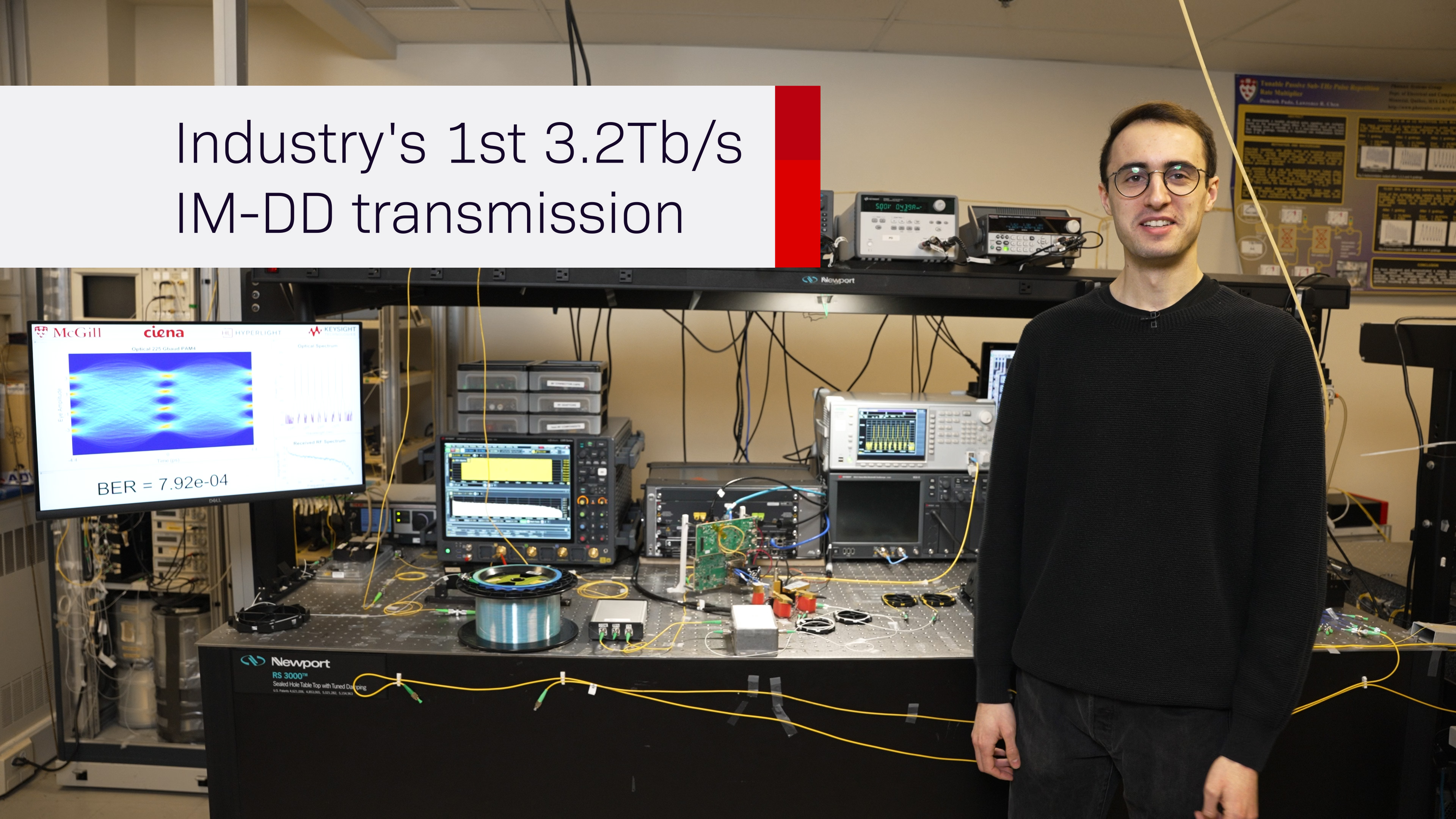4 critical requirements for the next-gen photonic layer
Today’s market dynamics are making it harder for network providers to effectively compete in an environment where revenue per bit is declining, and network bandwidth requirements are exploding. In the face of these business challenges, network providers are realizing they must evolve and transform their networks towards a more programmable infrastructure that can scale and respond on demand, to meet changing customer expectations and unpredictable traffic requirements.
While coherent optics are a critical element in enabling a programmable optical infrastructure, alone they are not enough to fulfill operators’ requirements for successful network transformation.
So what else is needed?
The photonic layer is the foundation of this programmable infrastructure, leveraging the latest coherent optical technology to deliver maximum scale at the lowest cost per bit. When examining the requirements of metro and long-haul infrastructure applications, including global data center interconnect (DCI) networks, there is a growing need for an agile, resilient and intelligent photonic layer. This Reconfigurable Add-Drop Multiplexer (ROADM)-based optical foundation leverages flexible, instrumented photonics and Layer 0 software control to scale the network for maximum capacity at the lowest space, power, and cost per bit.
The photonic layer is the foundation of this programmable infrastructure, leveraging the latest coherent optical technology to deliver maximum scale at the lowest cost per bit.
Let me explain the requirements of the next-gen photonic layer, beyond the coherent optics, so you can better understand why it will play a critical role in ensuring successful network transformation for operators.
1. Flexible ROADM infrastructure without restrictions
The main reason for deploying CDC-F ROADMs is to benefit from simplified automated service provisioning. With CDC-F, you don’t have to worry about any wavelength routing restrictions. This means it is possible to remotely route wavelengths across any viable path in the network - without having to drive to remote sites, insert cards or connect extra cabling to route wavelengths in a fixed direction that needs to be decided upon in advance. A CDC-F solution provides automated end-end service provisioning to handle unpredictable or temporary bandwidth demands over the full life of the network.

Is a flexible grid ROADM really required? Absolutely. Moving forward, optical networks will be required to support a mix of existing and higher speed coherent interfaces, which requires a flexible grid, reconfigurable photonic layer. Flexible grid future-proofs the network by providing the ability to right size channels to take advantage of economic benefits associated with next-gen higher baud modems (that require more than 50GHz of spectrum).
2. Fully instrumented, intelligent photonic system
To complement the agility and programmability enabled by CDC-F ROADMs and the latest coherent technology, the next-gen photonic layer must leverage software control and automation to reduce operational complexity and improve the efficiency of the network. Operators need software tools that extract complexity and simplify operations through better automation, control, and visibility of the optical network.
Here are some specific examples of key benefits derived from a fully instrumented, intelligent photonic layer:
a) Accelerated wavelength turn-up and simplified operations: This can be achieved with embedded software that automatically verifies the photonic topology uncovering any mis-provisioning or cabling mistakes and provides real-time feedback to the installer. Additional capabilities, such as the ability to continuously measure the fiber loss of every fiber (both active and dark fibers) as well as transponder loopback functionality to ensure that the transponders are properly connected and functional, are also important.
b) Automatic, system optimization and power-balancing: To continuously maximize system reach and performance in real-time.
c) Faster trouble-shooting to maximize service uptime: Advanced measurement capabilities that are integrated within the photonic layer enable quick isolation of faults and the ability to take the necessary actions in the best possible timeframe. Built-in fiber characterization functions like in-service Optical Time Domain Reflectometer (OTDR) allow operators to proactively check for fiber degrades or bad repairs, over traffic-carrying links, and immediately identify potential issues that can be quickly dealt with before services are impacted.
3. Increased service availability and automation
Not only does the photonic network need to be able to adapt to changing demands, but it has to be highly available at all times, even in the presence of multiple failures, to ensure a superior user experience and maintain customer loyalty. This is where L0 control plane capabilities are essential to enable a highly-resilient, programmable network foundation that can support changing service requirements and bandwidth-on- demand type of services, at the right cost points.
L0 control plane uses real-time photonic network topology to provide automated self- inventory and real-time wavelength path computation for faster turn-up of wavelengths, increased automation for efficient planning and operations, as well as photonic restoration.

Another important benefit of L0 control plane is that it facilitates wavelength re-grooming, enabling operators to perform proactive network maintenance in a condensed maintenance window with fewer truck rolls. Wavelength re-grooming can also be used to reroute wavelengths onto shorter, more optimized paths to reduce regenerator ports and service latency and rebalance wavelengths to extend the life of the existing network.
4. Real-time, system optimization with analytics and intelligence
The next-gen photonic layer will leverage the power of analytics and intelligence to drive advanced software applications to help operators extract the most value from existing network resources. Value can be quantified as improved efficiency, increased capacity, stronger channel reach, increased service availability, or increased automation for faster time to market.
These advanced software applications abstract complexity associated with advanced flexible technologies, making it fast and easy for operators to make intelligent decisions based on the current state of the network. For example, operators can use applications for real-time capacity optimization based on current available system margin. They can mine available network margin and convert it to capacity on demand or improve service availability during a disaster recovery situation. An additional software application that will be needed moving forward is one that will provide the ability to optimize spectrum usage and enable spectrum defragmentation to maximize network resource efficiencies over the life of the network.

As operators continue on this important network evolution journey it is clear the photonic layer plays a leading role. By making sure you include these four critical elements in your network transformation plans, you will have the right foundation to enable a more programmable infrastructure, that can scale and respond on demand to meet exceedingly unpredictable bandwidth requirements.







